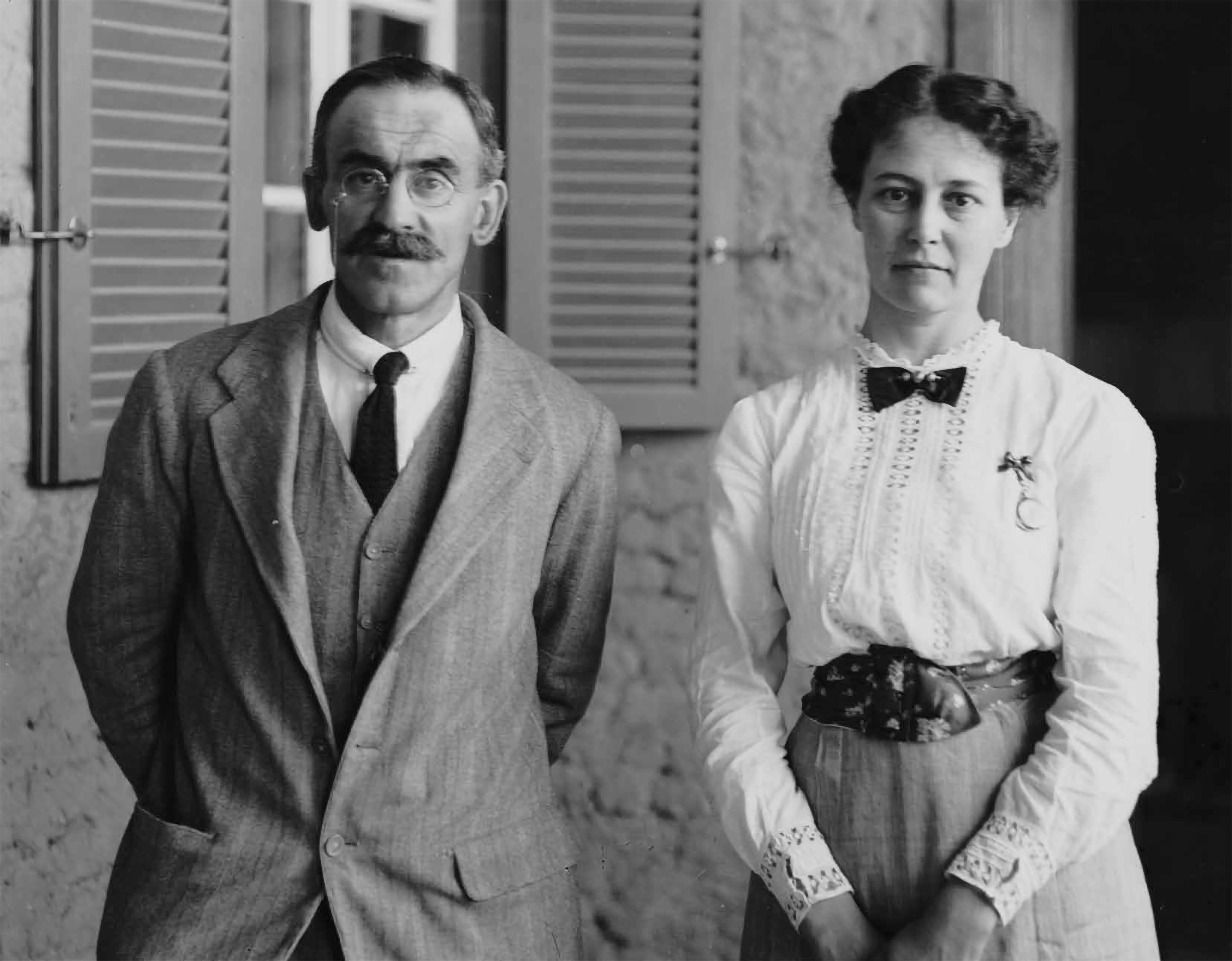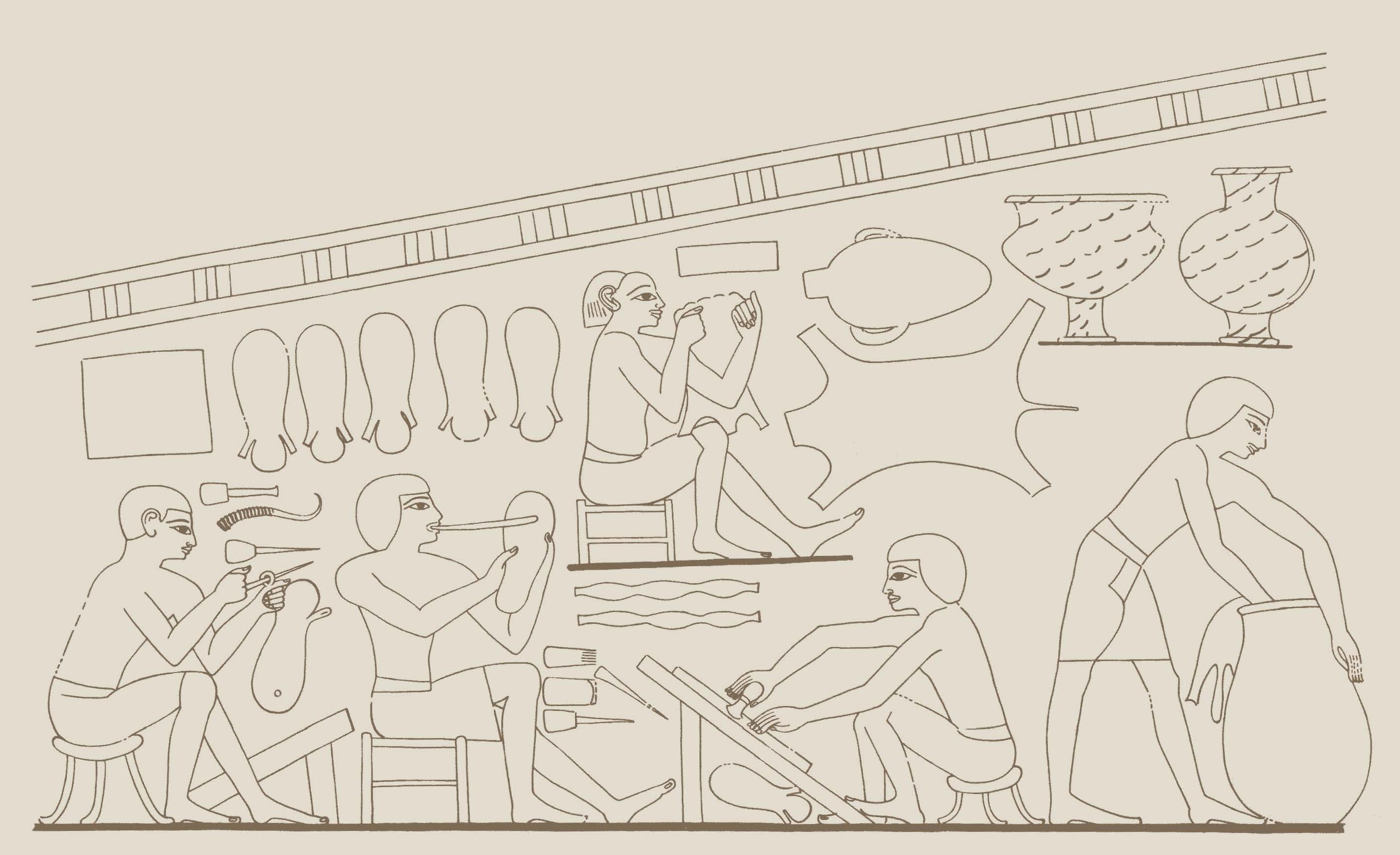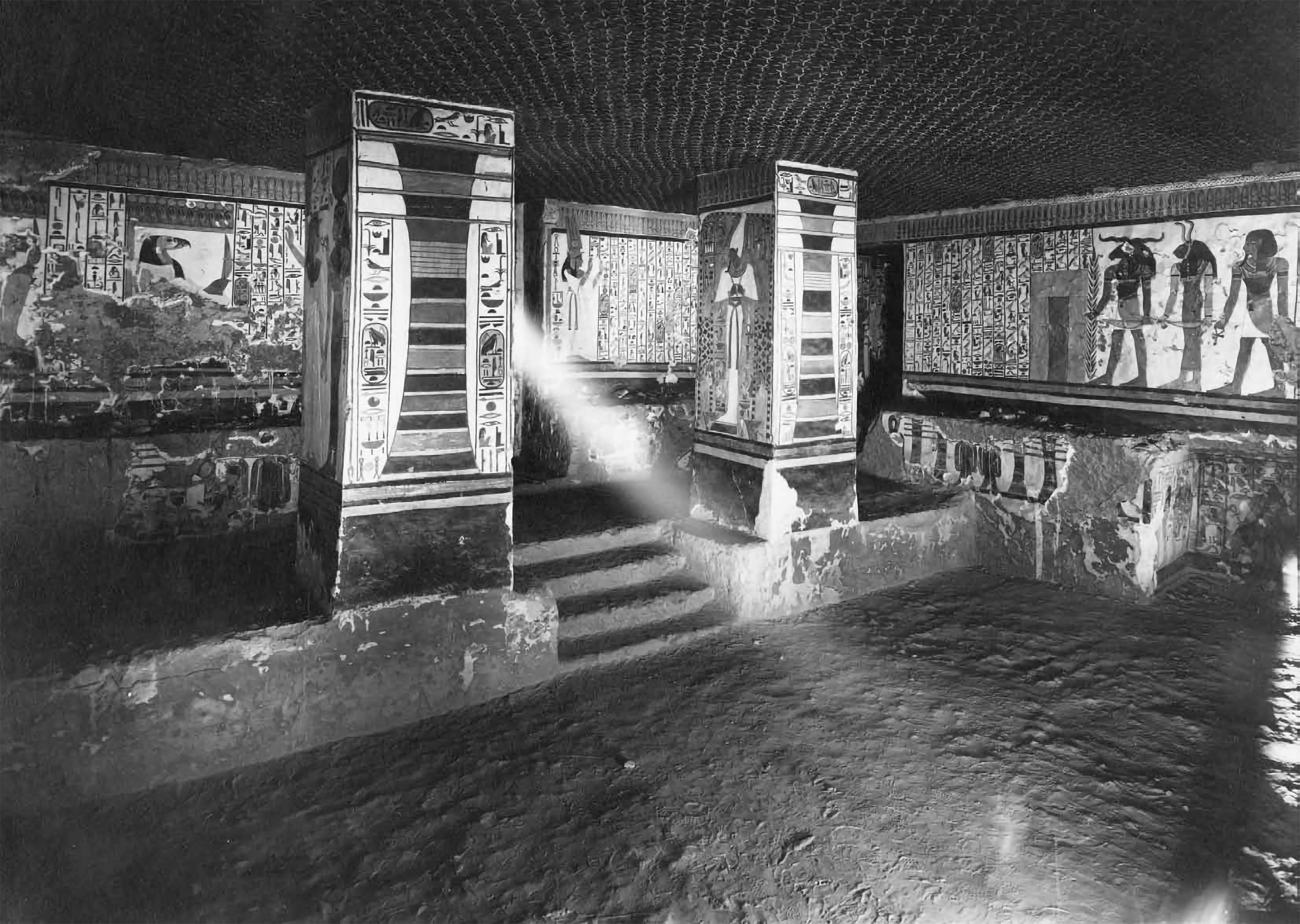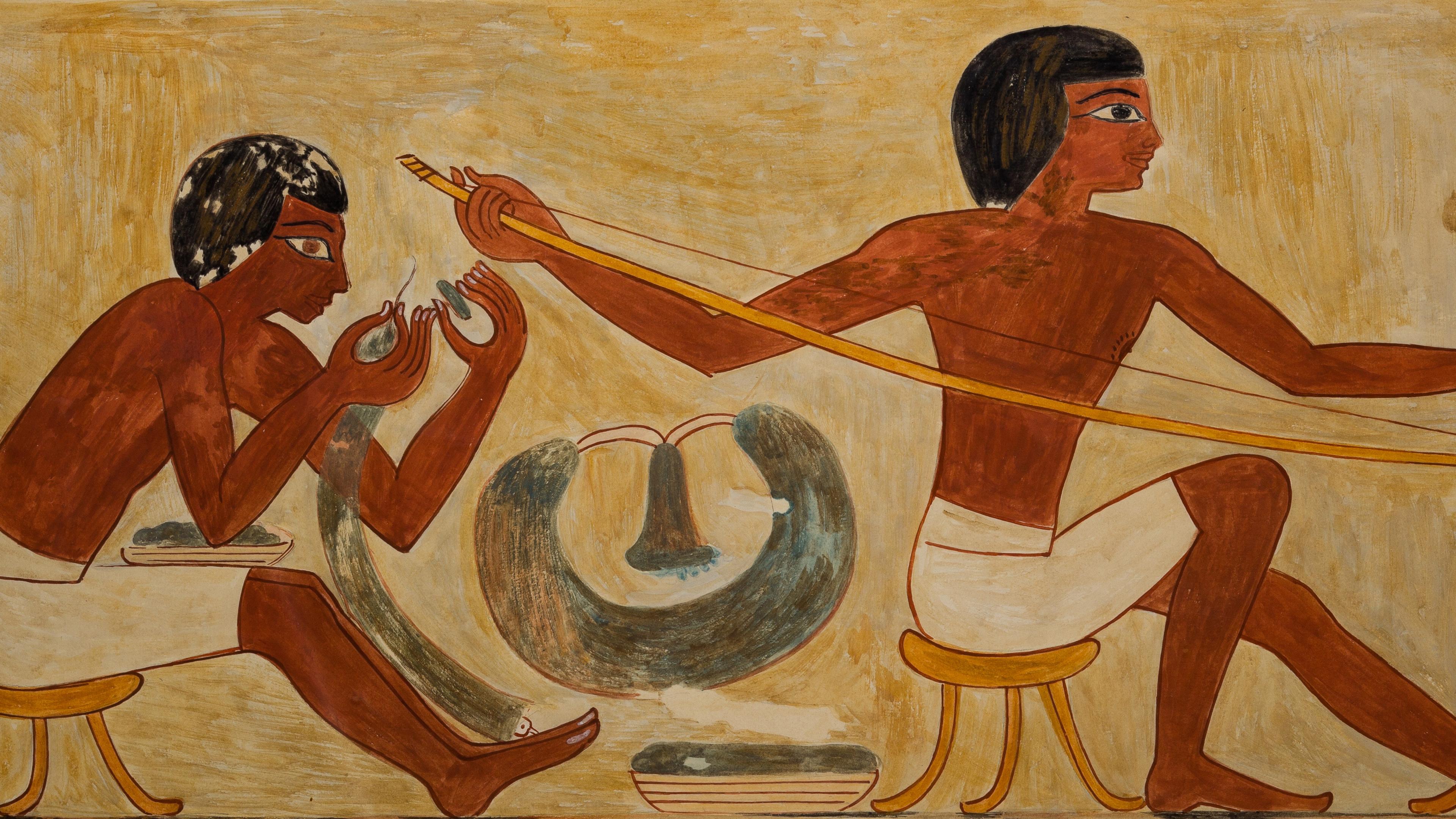In 1907, the Museum established the Graphic Section of the Egyptian Expedition and hired Norman de Garis Davies as head. The work of the Graphic Section concentrated on documenting tomb paintings in the cemeteries of Western Thebes, which had served as the burial site for Egypt’s southern capital, Thebes (modern Luxor). The royal tombs in the Valley of the Kings and the Valley of the Queens, as well as the tombs of officials and of artists living in the village of Deir el-Medina, provided the richest source of ancient Egyptian paintings.

Norman and Nina de Garis Davies. Image © Griffith Institute, University of Oxford
Davies was assisted by a number of artists, but his chief collaborator was his wife, Nina, who helped him develop a copying technique that almost exactly simulates the colors and brushstrokes preserved on the tomb walls. The majority of their paintings are facsimiles, painted at a 1:1 scale and showing areas of deliberate damage and accidental loss suffered over the millennia. The artists began by tracing the decoration, often by candlelight, which penetrated but did not reflect off the paper. The tracings were then transferred to watercolor paper or reduced photographically as line drawings for publication. The painting of the facsimiles also was done inside the tombs, though using sunlight reflected by mirrors. The earliest facsimiles were executed in watercolor. Within a few years, however, the chosen medium became tempera, which more closely simulated the matte opacity of the ancient paint.

Scene of leather workers in the tomb of Rekhmire. Drawing by Norman de Garis Davies
The tombs of officials in Western Thebes cover a period of almost one thousand years, from the early Middle Kingdom to the late New Kingdom (ca. 2000–1100 BCE). They preserve the distinctive painting styles of these important periods and the changes that occurred from dynasty to dynasty and reign to reign. The scenes on the walls not only record burial practices and ceremonial events but also provide valuable information on the day-to-day activities of the ancient Egyptians and on the fauna and flora of the time.

Sunlight reflected into the burial chamber of Nefertari’s tomb. Photo by Harry Burton
The Graphic Section also included photographer Harry Burton, who made complete photographic records of the same tombs that were being copied by the artists on the team. Reproductions of his photographs, together with those of the facsimiles and line drawings, were used to illustrate a number of publications on the tombs. The artists also painted selected scenes at several other sites. Between 1907 and 1941, some 350 facsimiles were completed. They serve as an important resource for study and an invaluable record of the condition of the tombs in the early twentieth century.
Previous rotations in Gallery 132
Catalogues for other rotations are linked below.
- Drink and Be Merry!, 2019–21
- Walk Like an Egyptian, 2016–19
- Romance Along the Nile: Ancient Egyptian Love Poetry, 2015
- Transforming the Dead, 2014
- Rekhmire, 2013
